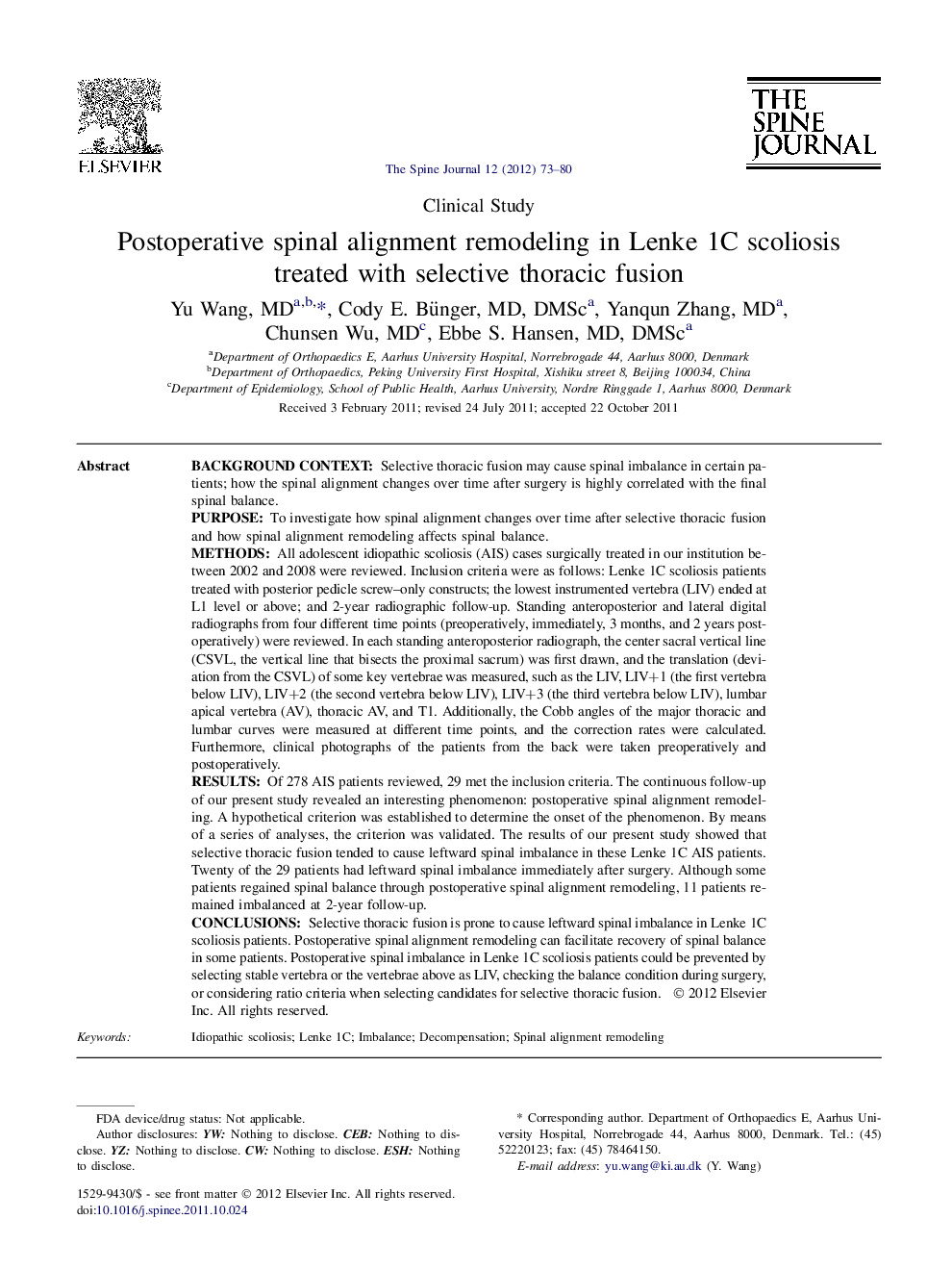| کد مقاله | کد نشریه | سال انتشار | مقاله انگلیسی | نسخه تمام متن |
|---|---|---|---|---|
| 4098617 | 1268619 | 2012 | 8 صفحه PDF | دانلود رایگان |

Background contextSelective thoracic fusion may cause spinal imbalance in certain patients; how the spinal alignment changes over time after surgery is highly correlated with the final spinal balance.PurposeTo investigate how spinal alignment changes over time after selective thoracic fusion and how spinal alignment remodeling affects spinal balance.MethodsAll adolescent idiopathic scoliosis (AIS) cases surgically treated in our institution between 2002 and 2008 were reviewed. Inclusion criteria were as follows: Lenke 1C scoliosis patients treated with posterior pedicle screw–only constructs; the lowest instrumented vertebra (LIV) ended at L1 level or above; and 2-year radiographic follow-up. Standing anteroposterior and lateral digital radiographs from four different time points (preoperatively, immediately, 3 months, and 2 years postoperatively) were reviewed. In each standing anteroposterior radiograph, the center sacral vertical line (CSVL, the vertical line that bisects the proximal sacrum) was first drawn, and the translation (deviation from the CSVL) of some key vertebrae was measured, such as the LIV, LIV+1 (the first vertebra below LIV), LIV+2 (the second vertebra below LIV), LIV+3 (the third vertebra below LIV), lumbar apical vertebra (AV), thoracic AV, and T1. Additionally, the Cobb angles of the major thoracic and lumbar curves were measured at different time points, and the correction rates were calculated. Furthermore, clinical photographs of the patients from the back were taken preoperatively and postoperatively.ResultsOf 278 AIS patients reviewed, 29 met the inclusion criteria. The continuous follow-up of our present study revealed an interesting phenomenon: postoperative spinal alignment remodeling. A hypothetical criterion was established to determine the onset of the phenomenon. By means of a series of analyses, the criterion was validated. The results of our present study showed that selective thoracic fusion tended to cause leftward spinal imbalance in these Lenke 1C AIS patients. Twenty of the 29 patients had leftward spinal imbalance immediately after surgery. Although some patients regained spinal balance through postoperative spinal alignment remodeling, 11 patients remained imbalanced at 2-year follow-up.ConclusionsSelective thoracic fusion is prone to cause leftward spinal imbalance in Lenke 1C scoliosis patients. Postoperative spinal alignment remodeling can facilitate recovery of spinal balance in some patients. Postoperative spinal imbalance in Lenke 1C scoliosis patients could be prevented by selecting stable vertebra or the vertebrae above as LIV, checking the balance condition during surgery, or considering ratio criteria when selecting candidates for selective thoracic fusion.
Journal: The Spine Journal - Volume 12, Issue 1, January 2012, Pages 73–80